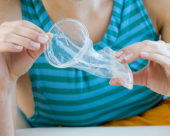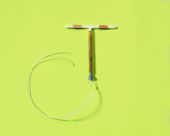With 13 methods of contraception for women and 2 methods for men, choosing the best method for you can be confusing. We've given lots of easy-to-understand information and videos on each of the different methods available, including how they work, where to get them, the advantages and disadvantages. From condoms to pills, patches to implants, and short-term to more permanent solutions – find the contraception that is right for you.
In this section
-
Combined oral contraceptive pill (COC)
Often called ‘the pill’, the combined pill contains two hormones similar to those produced naturally by women. It is over 99% effective when used perfectly but in typical use, the rate is 91%.

-
Condoms (male)
Male condoms help protect against pregnancy and sexual transmitted infections (STIs). Used correctly, they are 98% effective but in typical use they are 82% effective. Male condoms are a form of barrier contraception. This means that they protect against pregnancy and sexually transmitted infections (STIs).

-
Contraceptive implant
The contraceptive implant is small rod, the size of a matchstick, which is inserted into the upper arm. It is not usually visible and is estimated to be 99.9% effective. The implant is also known as a long acting reversible contraception (LARC) and lasts for three years.
-
Contraceptive injection
Contraceptive injections contain a progestogen hormone, which is similar to that which occurs naturally in women. Injections last between 8 and 13 weeks, depending on the type you use and are estimated to be over 99% effective when taken on time.

-
Contraceptive patch
The patch is a small, beige-coloured square that sticks on your skin. Used correctly, it is estimated to be over 99% effective whereas typical use is 91%. It works by releasing hormones daily, preventing the ovaries from releasing an egg each month (ovulation).

-
Diaphragms and caps
Diaphragms and contraceptive caps are a barrier method of contraception. Used correctly with spermicide (essential) they are 92-96% effective at preventing pregnancy. They only provide limited protection against sexually transmitted infections (STIs) so you are always advised to also use a condom.
-
Emergency contraception
Emergency contraception can be used if you have had sex without a condom, a condom accident or think your current method has failed such as missing a contraceptive pill. There are no serious side effects of using emergency contraception.

-
Female condoms
Female condoms are a form of barrier contraception. This means that they protect against both pregnancy and sexually transmitted infections (STIs). When used correctly and consistently, condoms are a reliable method of preventing pregnancy - thought to be around 95% effective.

-
Intrauterine device (IUD/non-hormonal coil)
The IUD is a small plastic and copper device that is inserted into your womb by a doctor or nurse. It is a very effective method of contraception and newer types of IUD are over 99% effective.

-
Intrauterine system (IUS/Hormonal coil)
The IUS is a small plastic device that looks like a letter T and is inserted into your womb by a doctor or nurse. It is estimated to be over 99% effective and is one most effective forms of contraception available in the UK.

-
Natural family planning
Natural family planning teaches you when you can have sex each month without contraception with a reduced risk of pregnancy. It is sometimes called fertility awareness. Depending on how accurately it is used, up to one in four women using natural family planning may get pregnant.

-
Permanent methods
Permanent methods of contraception are suitable for people who are sure they never want children or don’t want any more. You will need to talk to a GP if you are considering these methods.
-
Progestogen-only pill (POP)
There are two types of Progestogen-only pill (POP). Unlike the combined oral contraceptive pill, they contain no oestrogen. Taken correctly, POP is over 99% effective but in typical use effectiveness is 91%.

-
Vaginal ring
The vaginal ring is a small, soft plastic ring placed inside your vagina like a tampon. Used correctly, it is estimated to be over 99% effective. It works by releasing hormones (progestogen and oestrogen) to stop the release of eggs.
